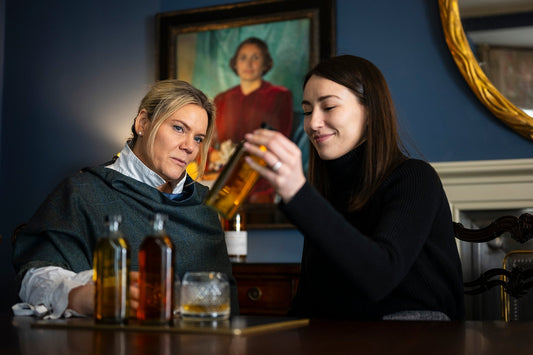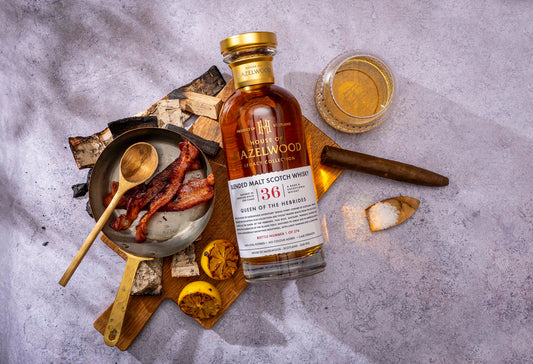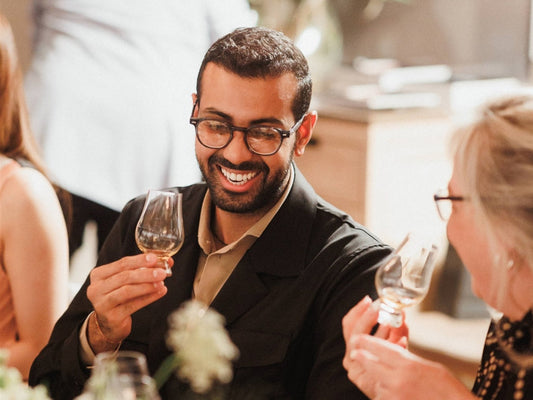Blended Whisky was once considered the darling of the whisky world. However, since the 1970s, Single Malt Scotch Whisky has been on an upwards trajectory in popularity and production. So, what prompted this change in attitude towards Blended Whisky?
Ask many a connoisseur of whisky to make a recommendation, and they’ll often defer to a Single Malt Scotch Whisky. Whilst there is no doubt that there are some truly delicious single malts to be enjoyed, the diversity that other categories can offer is limitless.

Mid-century Tastes: Why did Single Malt begin to overtake Blended Scotch Whisky as the aged whisky of choice?
There is no single answer that can account for a change in tastes, with drinkers beginning to favour Single Malt Whiskies over Blended Whisky, but instead a sequence of occurrences which can be attributed to changing attitudes and adoption.
A venture into the world of Single Grain Scotch Whisky opens a world of gloriously delicious dessert-like properties – thanks to its continuous distillation and raw material choice, a rarer alternative to the Single Malt, but no less rich in provenance. Then there lies Blended Scotch Whisky – the marriage of grain and malt components from different distilleries. The process sees an expert blender marry parcels of malt and grain together (malt only for a Blended Malt)– and with the scope and diversity of parcels with far reaching provenance, free from the confines of a signature “house” style, the resulting spirit can be as exceptional as it is complex in its depth.
So, why are blends or even single grains overlooked by some favour of their single malt counterparts? Let us take a look.

Availability of Age
Despite their decline in popularity with some drinkers, blended whiskies remain one of the biggest drivers of sales around the world as an industry. By their nature, they tend to be produced at scale through continuous distillation to help facilitate enormous demand - not just for whisky production - but to create new make spirit for use across other industries too.
Due to this commercial demand, distillers rarely have had the opportunity to set aside selected parcels of grain, a key component of Blended Whisky, for extensive aging, as it has been considered a poor investment against a background of demand. However, in the instance of the stocks which reside under House of Hazelwood today, these parcels were stowed away to slumber for personal consumption, experimentation, and innovation – a demonstration of the innovative and pioneering whisky making practices that remain at the forefront of our methodologies today.
Decades on, these blends and grain whiskies are finally arising from their lengthy slumbers, to be bottled for the first time at age statements and styles that are genuinely unprecedented in provenance and expression. For instance, The Old Ways, a 1972 Vintage Single Grain from Girvan Distillery – made by techniques long since lost. Or the Queen of the Hebrides, a 36-Year-Old Blended Malt of exclusively Islay malts, representative of components from the 1980s that are extremely in demand and rare in their availability.

With such rarity in laying down parcels of malt and grain for the purpose of becoming well-aged Blended Whisky Scotch Whisky, it means that the rarity of such a proposition has never been more compelling. Extremely limited stocks of these incredibly complex whiskies remain today – which means that securing a bottle of this liquid history is a possession to truly treasure.
Marketing and the Golden Era of the Single Malt
Since the mid-century of the 1900s, the Single Malt has been heavily marketed to the whisky drinker. The marketing has been largely underpinned by themes such as creative control and handicraft - the whisky maker managing the process from end to end.
But of course all whisky is fundamentally crafted in the same way, with the difference lying within each brand’s own innovation, choices on wood policy and ultimately maturation. As the Single Malt rose in popularity, clever marketing campaigns have prioritised the category, leading to a collective belief that a Blended Whisky could be considered inferior, despite the reality being quite the opposite – for a well-balanced, well-crafted Blended Whisky is just as flavourful, complex, and nuanced as any Single Malt.

But this overlooks the rarer blended whiskies on offer, which have slumbered in single casks for the better part of half a century, taking on deeply complex flavours that are only possible from a length maturation, ultimately offered free from post-production intervention techniques. It overlooks esters and congeners which may be formed exclusively as a result of a particular grain whisky production – such as mint and menthol.
Blended Whisky and its related styles may have fallen out of favour with some drinkers, but with the arrival of well-aged and extremely rare bottlings becoming more visible and highly commended in whisky communities and with experts alike, it is unlikely they’ll remain undiscovered for long.




